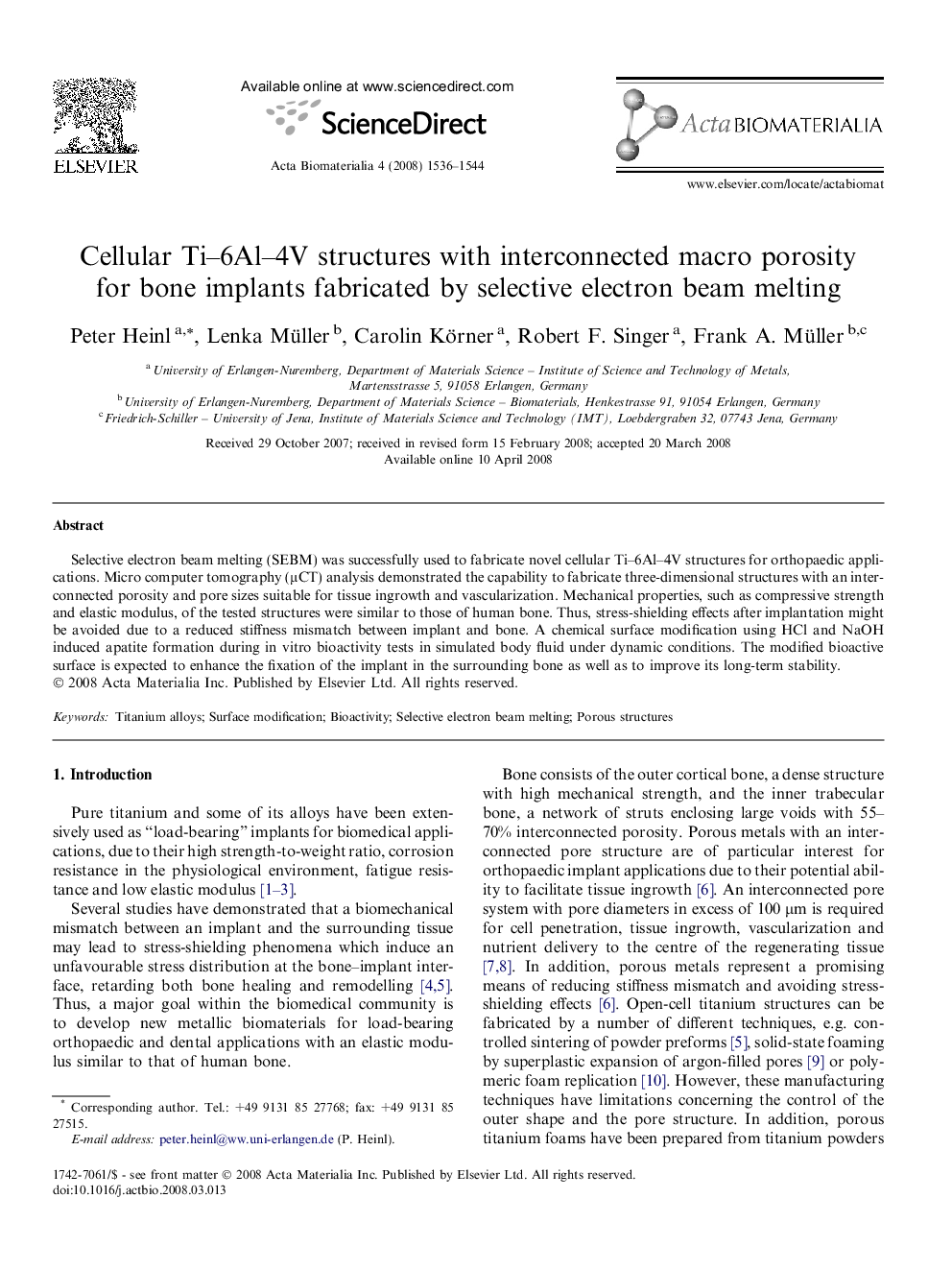| Article ID | Journal | Published Year | Pages | File Type |
|---|---|---|---|---|
| 1587 | Acta Biomaterialia | 2008 | 9 Pages |
Selective electron beam melting (SEBM) was successfully used to fabricate novel cellular Ti–6Al–4V structures for orthopaedic applications. Micro computer tomography (μCT) analysis demonstrated the capability to fabricate three-dimensional structures with an interconnected porosity and pore sizes suitable for tissue ingrowth and vascularization. Mechanical properties, such as compressive strength and elastic modulus, of the tested structures were similar to those of human bone. Thus, stress-shielding effects after implantation might be avoided due to a reduced stiffness mismatch between implant and bone. A chemical surface modification using HCl and NaOH induced apatite formation during in vitro bioactivity tests in simulated body fluid under dynamic conditions. The modified bioactive surface is expected to enhance the fixation of the implant in the surrounding bone as well as to improve its long-term stability.
